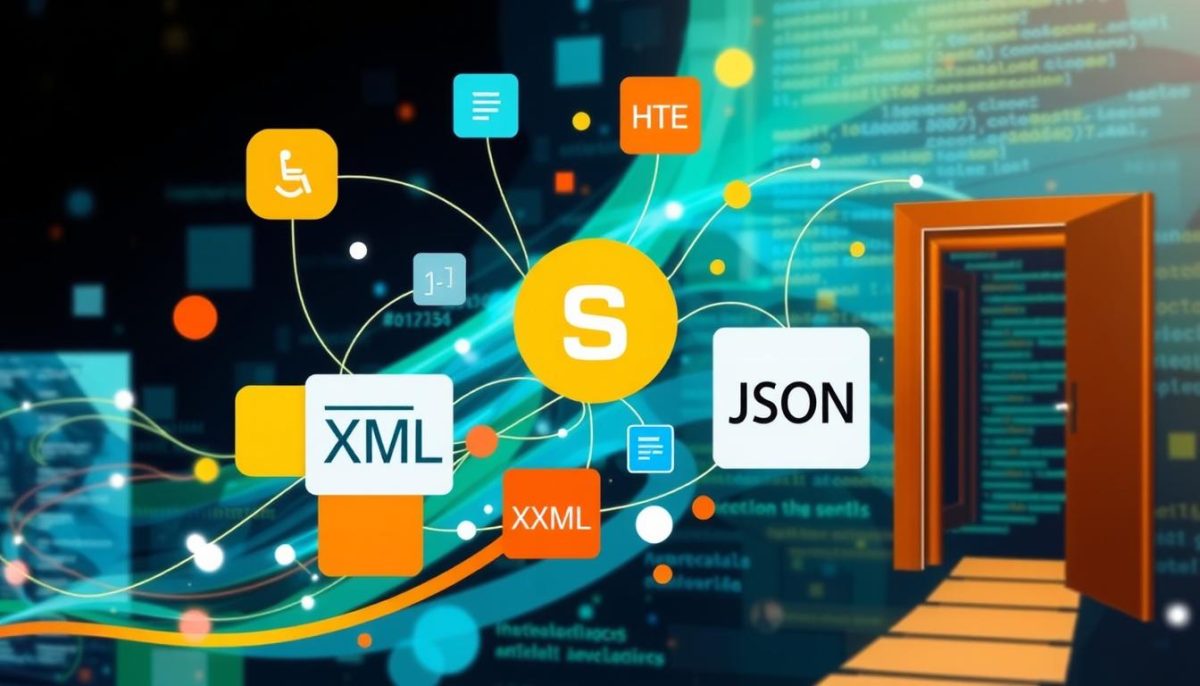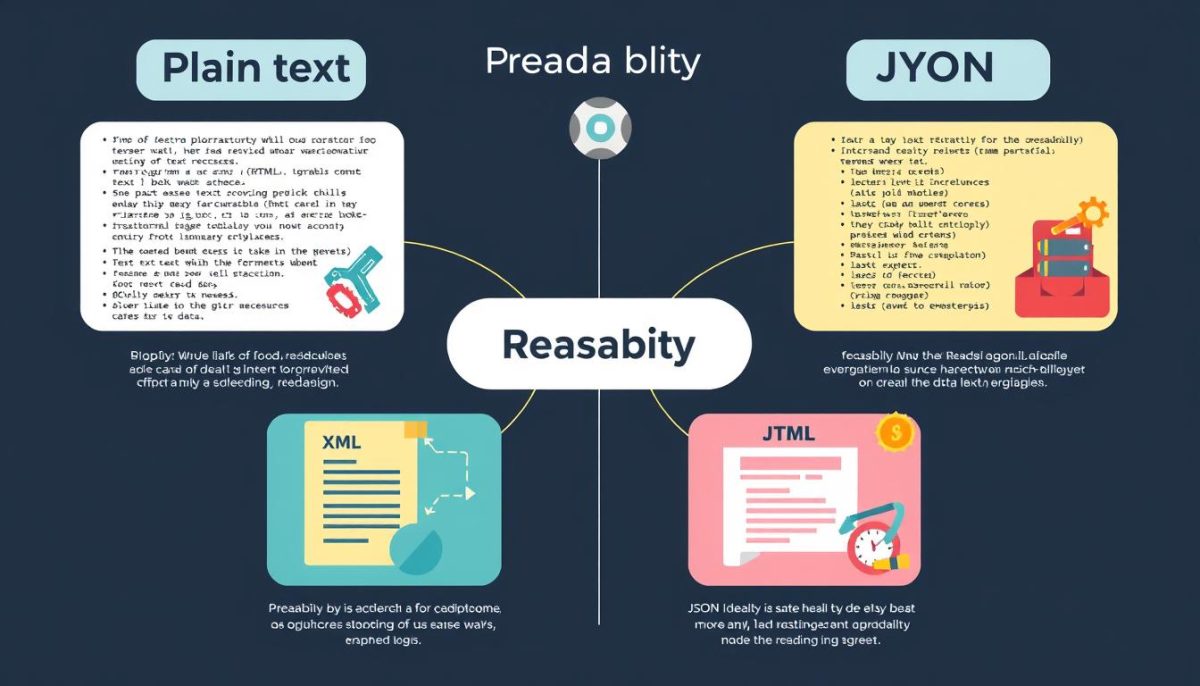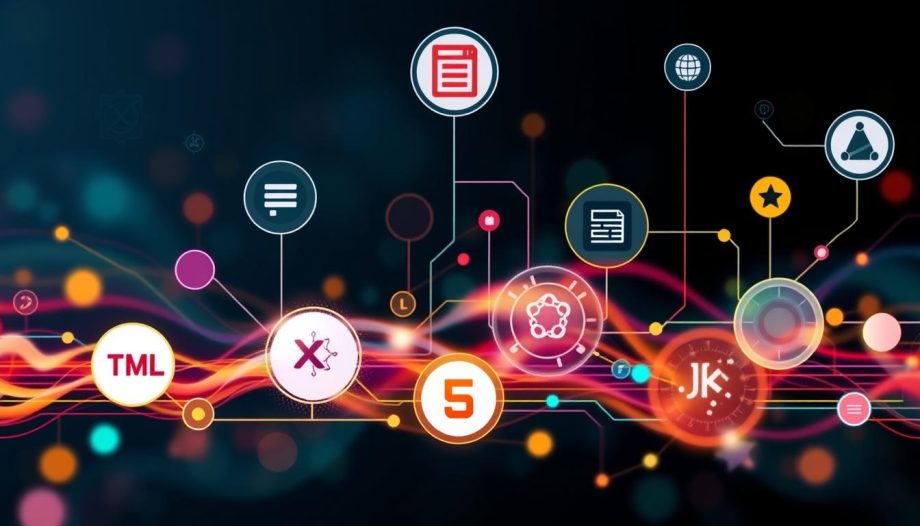In today’s digital era, the way we encode and share information through data formats has become paramount. Data formats such as Plain Text, XML, HTML, and JSON dictate how our data is structured, stored, and transmitted, directly influencing our digital communication. As we explore these essential formats, we’ll uncover their unique characteristics, vital for developers, data analysts, and anyone engaged with digital information.
Our understanding of these formats enriches our approach to data interchange, enhancing usability and accessibility in various applications. Join us as we delve deeper into each format and its role in shaping our digital experiences.
What Are Data Formats and Why Do They Matter?
Data formats play a crucial role in the realm of digital communication, serving as the foundation for effective information exchange and data transmission. By adhering to specific standards, they allow diverse systems and technologies to share data seamlessly. For example, when sending a message via email, it’s essential for the content to conform to a defined format, ensuring that the recipient’s email client interprets it correctly. Similarly, web services often rely on data formats such as JSON and XML to maintain consistent data representation across various platforms.
The Role of Data Formats in Digital Communication
Communication in the digital age heavily depends on data formats. These structures dictate how information is encoded and decoded, allowing different systems to interact. Effective data transmission ensures that information travels securely from one point to another while retaining its intended meaning. Without a standardized format, the risk of miscommunication and data loss would increase significantly. As we explore the various roles of data formats, it becomes clear they are indispensable in promoting reliable digital communication.
How Data Formats Influence Usability and Accessibility
Usability and accessibility are essential factors that stem from the design of data formats. Well-structured formats enhance user experience by facilitating easier interaction with the data. For instance, the simplicity of plain text makes it accessible to a wide audience, including individuals using assistive technologies like screen readers. On the opposite end, overly complex formats can create barriers that hinder usability. By understanding and optimizing various data formats, we can design systems that cater to a broader range of users, ensuring that everyone has equitable access to information.

| Data Format | Usability | Accessibility |
|---|---|---|
| Plain Text | High – Easy to read and understand. | High – Compatible with screen readers. |
| XML | Medium – Requires understanding of markup. | Medium – Can be complex for some users. |
| HTML | High – Widely used; user-friendly structure. | High – Tools available for web accessibility. |
| JSON | High – Simple format for programmers. | Medium – Less straightforward for non-technical users. |
Data Formats: Plain Text, XML, HTML, JSON, and Beyond
Understanding various data formats is essential for anyone involved in technology and web development. Each data format serves its unique purpose, with specific features that suit different scenarios. Let’s dive into the key formats: plain text, XML, HTML, and JSON.
An Overview of Plain Text Format
Plain text is the most straightforward data format, consisting entirely of unformatted text. It allows us to create simple text documents without any additional styling or markup. The primary advantage of using plain text lies in its readability, as it can be opened and edited in virtually any text editor across different operating systems. This simplicity makes it ideal for straightforward file operations and scripting, although its lack of structure limits its application in complex data representation.
Understanding XML: Structure and Usage
XML, or Extensible Markup Language, is designed specifically for storing and transporting data in a structured way. It employs tags to define elements and attributes, enabling a clear data structure. This feature makes XML suitable for data interchange between systems, particularly in APIs and web services. Its flexibility allows developers to create custom tags tailored to specific needs. While XML provides great adaptability, this leads to verbosity, resulting in larger file sizes compared to other formats.
The Power of HTML in Web Development
HTML stands out as the standard markup language employed in web development. It lays the groundwork for structuring content on the internet, facilitating the integration of text, images, and multimedia. By defining how content is presented, HTML plays a crucial role in user experience design. With advancements like HTML5, we see enhanced capabilities allowing for richer web applications and a more engaging content presentation.
JSON: The New Standard for Data Interchange
JSON, or JavaScript Object Notation, has risen to prominence as a preferred format for data interchange, especially in web applications. Its lightweight data format ensures quick and efficient data transmission. The straightforward syntax of JSON makes it easy for both humans and machines to understand and parse. This feature has led to its widespread implementation in APIs and communication protocols, effectively enabling seamless interactions between server and client components in web development.
Comparing Key Features of Different Data Formats
In the diverse world of data formats, each type brings unique attributes that affect readability, human interaction, and overall effectiveness in various tasks. Recognizing these features assists us in making informed choices about which format to utilize for our projects.
Readability and Human Interaction
Readability plays a crucial role in how we engage with data formats. Plain text excels at simplicity, ensuring that anyone can read and modify it with minimal effort. On the other hand, formats like XML and JSON, while possessing a learning curve, are still designed with clear syntax to enhance developer accessibility. Our interaction with HTML provides a user-friendly experience, especially when creating visually appealing web content, although the complexities may deter non-technical users.
Data Storage and Hierarchies
Different formats exhibit distinctive strengths in data storage and organization. XML stands out with its capability to define hierarchies thanks to its nested structure, supporting complex data representations effectively. JSON offers similar hierarchical features but does so more concisely, allowing for easier parsing and reduced storage space. In contrast, plain text lacks structured hierarchies, which can hinder its effectiveness when storing more intricate data.
Application Scenarios for Each Format
Each data format shines in specific application scenarios, which makes understanding their use cases essential. Plain text finds its niche in simple documents and logs. XML is widely employed in configuration files and data interchange between various applications. HTML serves as the backbone for creating engaging web pages, while JSON is prevalent in APIs and client-server communications. By knowing these scenarios, we can effectively choose the appropriate data format that meets our project requirements.

Future Trends in Data Formats
As we navigate through an era of rapid technological advancements, the future trends in data formats are becoming increasingly evident. We are observing a significant move towards more data-efficient formats that prioritize reduced file sizes while enhancing speed and compatibility. This shift is not just about making data more accessible; it’s about ensuring that it seamlessly integrates with the myriad of emerging technologies shaping our world today.
The rise of machine learning and artificial intelligence is particularly influential in this evolution. New data formats are designed with these technologies in mind, facilitating superior data exchange and integration processes. In our daily operations, it’s vital to recognize how these emerging technologies are reshaping the landscape of data formats.
Staying informed about these trends will empower us—developers and businesses alike—to choose the most effective data formats that suit our needs. By embracing the future trends, we can ensure we are not only keeping pace with technological advancements but also maximizing our potential in the ever-evolving digital landscape.

